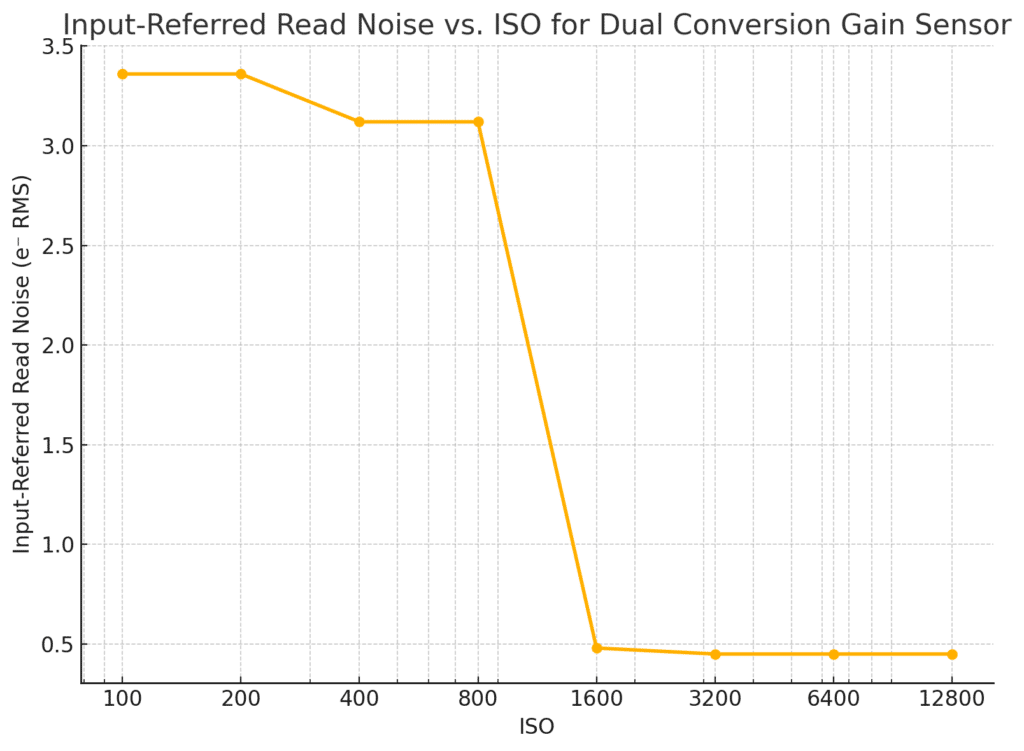Read noise sets the lower limit of a sensor’s usable dynamic range. It encompasses all noise sources between the pinned photodiode (PPD) and the final digital output. For modern CMOS sensors, this path is often split into two readout modes via dual conversion gain (DCG).
Read noise includes:
- Reset noise at the floating diffusion (kTC noise),
- Source follower transistor noise,
- Thermal and flicker noise in downstream circuitry,
- PGA (programmable gain amplifier) noise, and
- ADC quantization and comparator noise.
The total noise at the output of the ADC can be referred back to the input (PPD) in electrons RMS using the conversion gain (e⁻/DN).
DCG sensors switch between two analog gain modes:
- High Conversion Gain (HCG):
- Increases voltage per electron.
- Reduces input-referred read noise.
- Sacrifices full well capacity.
- Used atlow ISO settings.
- Low Conversion Gain (LCG):
- Reduces voltage per electron.
- Increases full well capacity.
- Read noise is higher in electrons, but digitization spans more charge.
- Used at high ISO or bright scenes.
This gain switch typically occurs just before the PGA and ADC.
Let’s suppose you have the following:
| Mode | Conversion Gain (e⁻/DN) | Read Noise (DN) | Read Noise (e⁻) |
| HCG | 0.30 | 2.0 | 0.6 |
| LCG | 2.40 | 1.5 | 3.6 |
- HCG is ideal for dark scenes — it minimizes read noise at the expense of full well capacity.
- LCG is ideal for bright scenes — it allows higher signals without clipping, at the cost of more read noise.
Implications for Input-Referred Noise
Since conversion gain changes, the same output noise in DN implies different input-referred noise in electrons:
σ_input = σ_output × CG
Any analysis of read noise must include:
- Which gain mode was used,
- The corresponding conversion gain,
- Whether the mode switch was automatic or manual.
Best Practices for Measuring Read Noise with DCG Sensors
- Force ISO to control gain mode
- Capture dark frames for each gain mode to isolate read noise.
- Use flat-field pairs to compute conversion gain for each mode.
- Build separate PTCs for HCG and LCG regimes.
- Detect the transition point, where dynamic switching may occur.
Dual conversion gain allows image sensors to operate closer to the photon-limited ideal in both bright and dark scenes. But it adds complexity to noise analysis: what looks like a clean, continuous curve might hide a sharp gain-mode transition with very different noise characteristics.
Understanding and accounting for DCG is essential for accurate characterization of input-referred noise in today’s high-performance CMOS sensors.

Leave a Reply